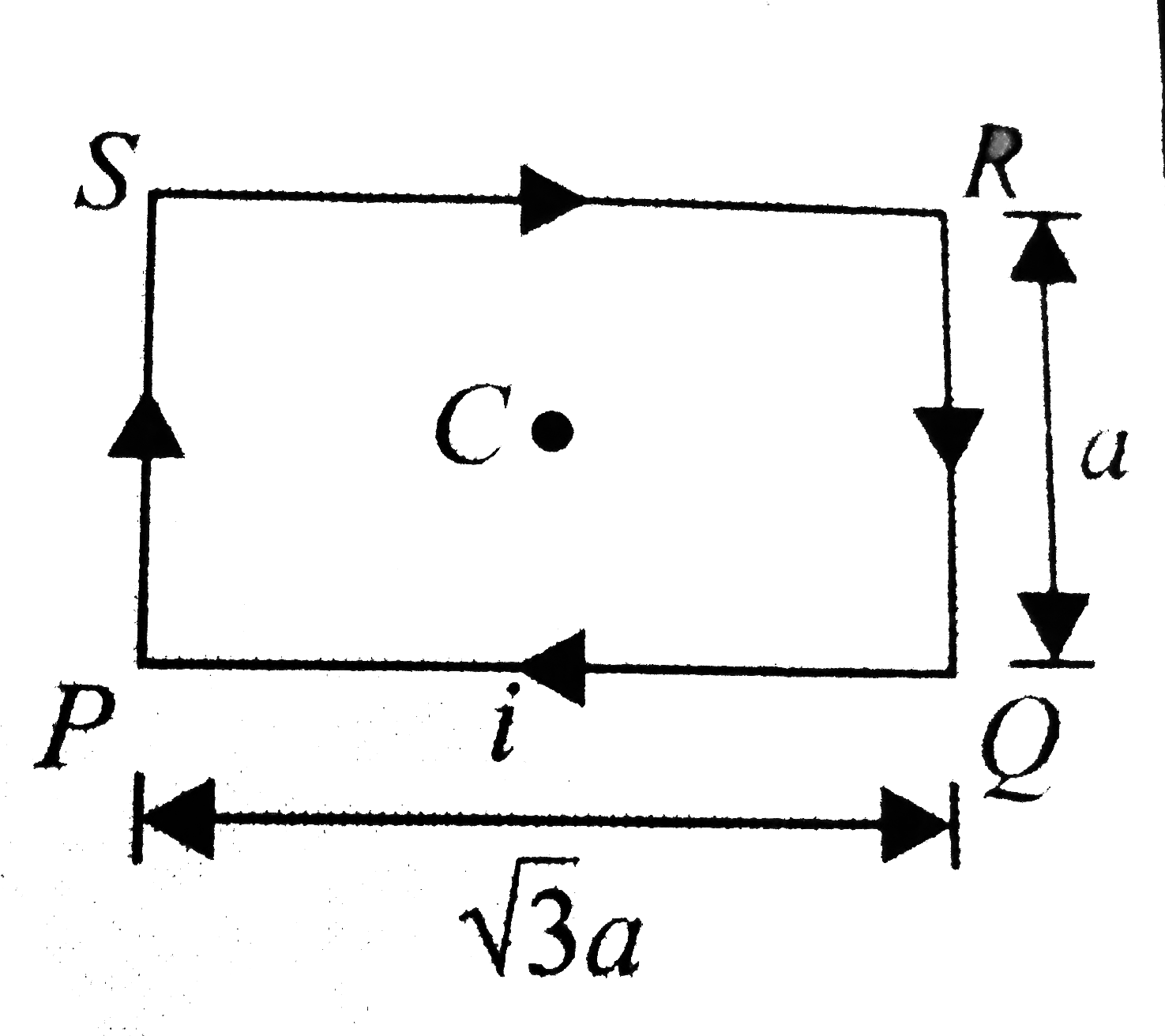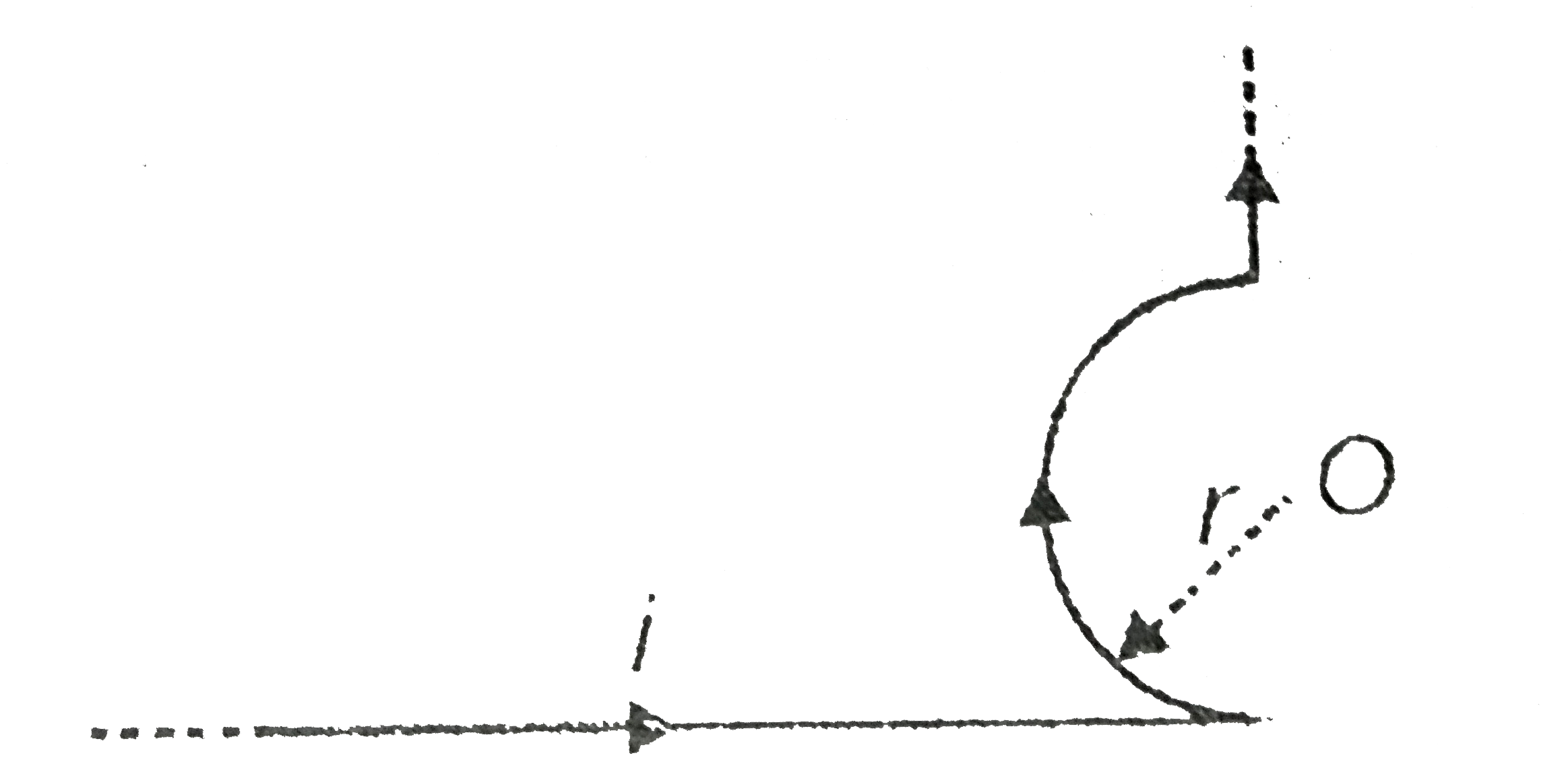Find resultant magnetic field at 'C' in the figure shown.
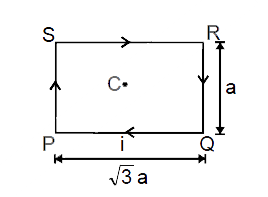
Video Solution
Text Solution
It is clear that ‘B’ at ‘C’ due all the wires is directed . Also B at ‘C due PQ and SR is same. Also due to QR and PS is same
|
Topper's Solved these Questions
- MAGNETISM Book:MOTIONChapter:MAGNETISM Exercise:EXERCISE-1
Explore 50 Videos
- MAGNETISM Book:MOTIONChapter:MAGNETISM Exercise:EXERCISE-2 (Level-I)
Explore 40 Videos
- LOGIC GATESBook:MOTIONChapter:LOGIC GATESExercise:EXERCISE - 2
Explore 10 Videos
- MAGNETISM -1Book:MOTIONChapter:MAGNETISM -1Exercise:Exercise - 3 SECTION -A
Explore 56 Videos
Similar Questions
Knowledge Check
The magnetic field at the centre the figure is
 A2I(√2+π)×10−7rB2I(√2+π4)×10−7rCI(√2+π)×10−7rDI(√2+π4)×10−7r
A2I(√2+π)×10−7rB2I(√2+π4)×10−7rCI(√2+π)×10−7rDI(√2+π4)×10−7rFind the magnetic field at the origin in the fig. Shown in fig.
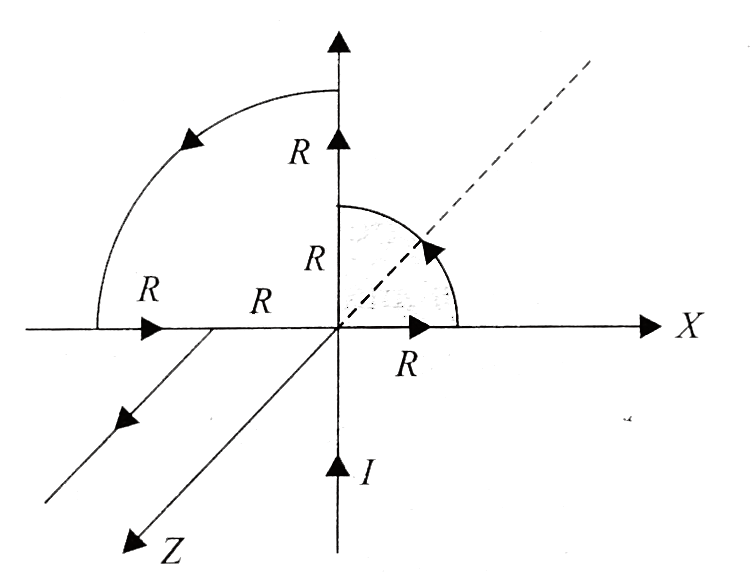 Aμ0I4R(34ˆk+1πˆj)Bμ0I4R(32ˆk+1πˆj)Cμ0I4R(34ˆk+12πˆj)DNone of these
Aμ0I4R(34ˆk+1πˆj)Bμ0I4R(32ˆk+1πˆj)Cμ0I4R(34ˆk+12πˆj)DNone of theseFind the magnetic field at P due to the arrangement shown
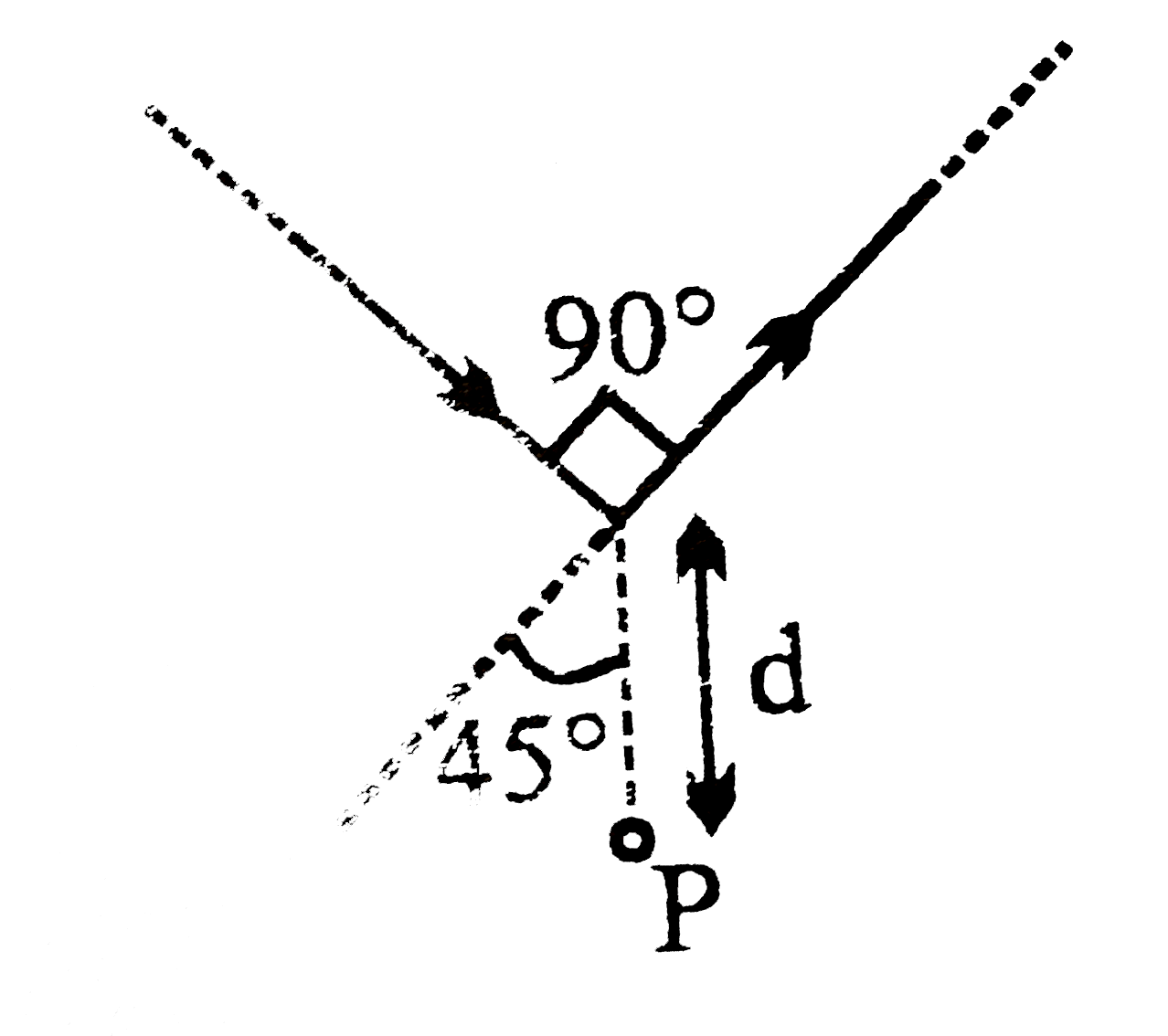 .Aμ0i√2πd(1−1√2)⊗B2μ0i√2πd⊗C2μ0i√2πd⊗Dμ01√2π(1+1√2)⊗
.Aμ0i√2πd(1−1√2)⊗B2μ0i√2πd⊗C2μ0i√2πd⊗Dμ01√2π(1+1√2)⊗
Find the magnetic field B at the point P in figure
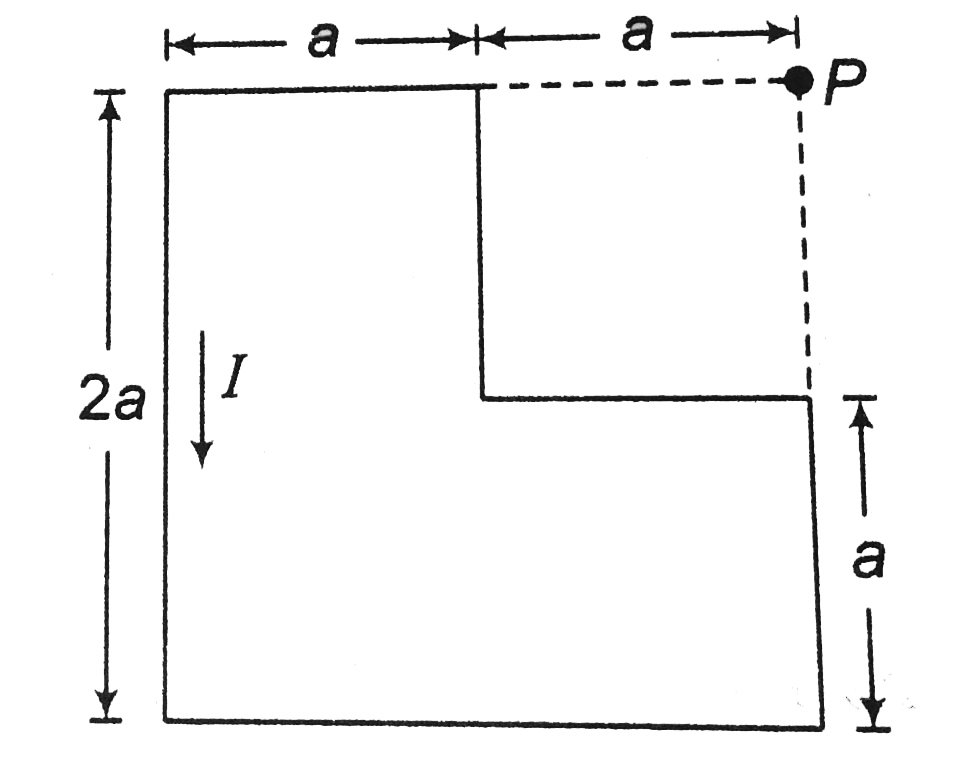
View SolutionFind the magnetic field at P due to the arrangement shown.:

View SolutionFind the magnetic field at P due to the arrangement shown
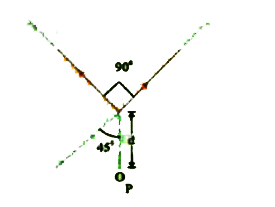
View SolutionFind the magnetic induction at the origin in the figure shown.
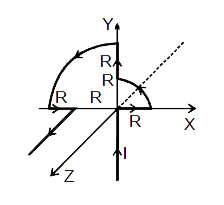
View SolutionA charge particle of charge 'q' and mass 'm' enters in a given magnetic field 'B' and perpendicular to the magnetic field as shown in the figure. It enters at an angle of 60∘ with the boundary surface of magnetic field and comes out at an angle of 30∘ with the boundary surface of the magnetic field as shown in the figure. Find width 'd' in which magnetic field exist.
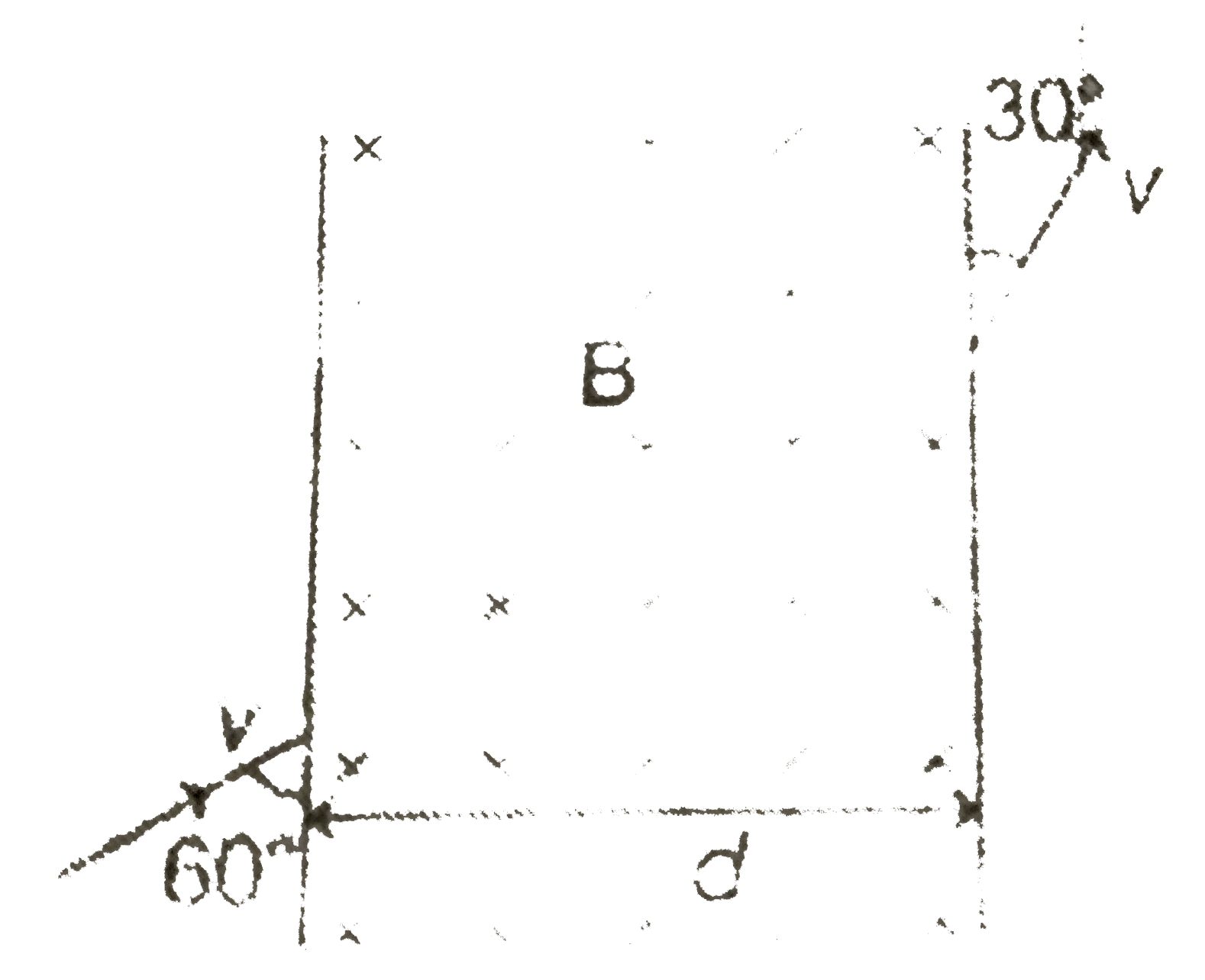
View Solution
